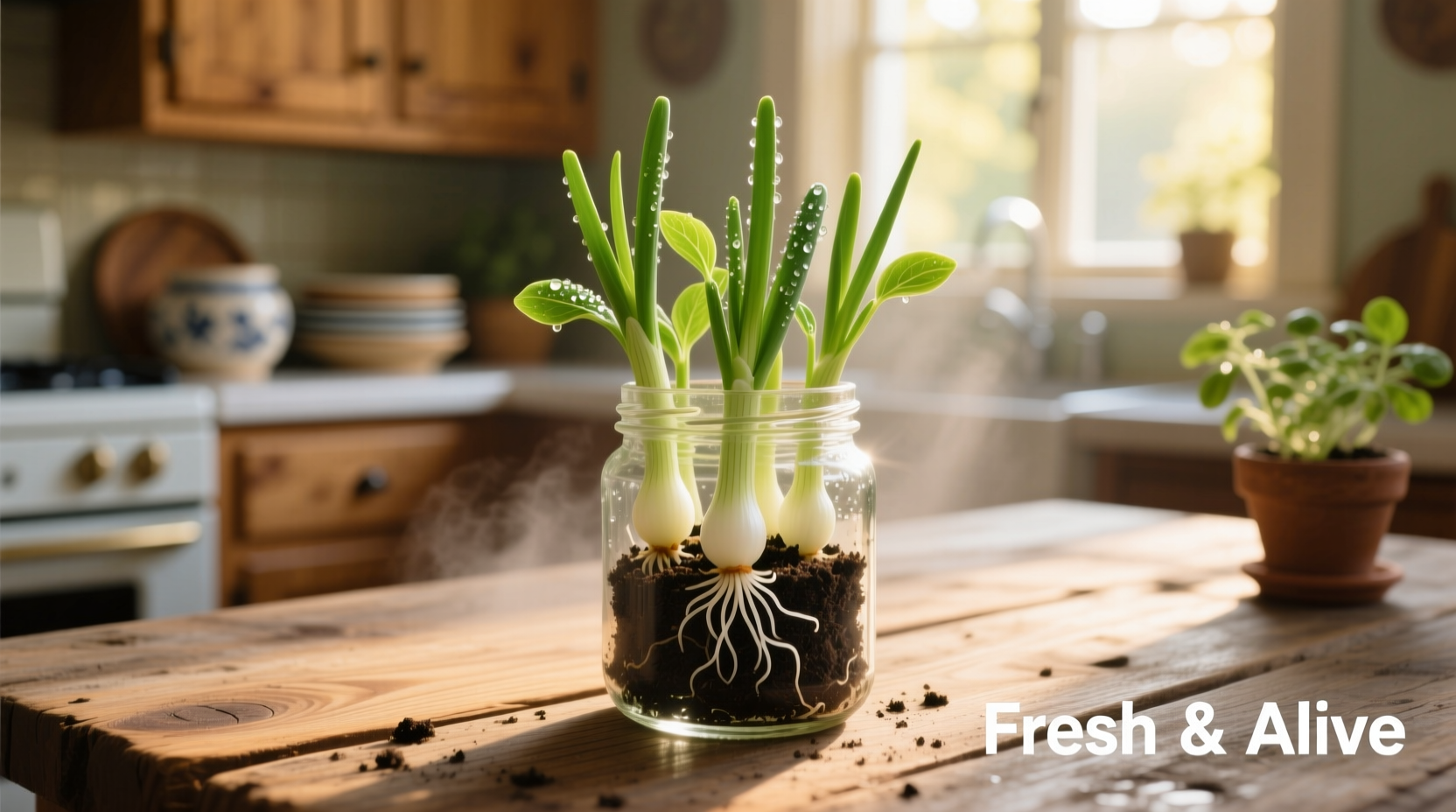What Exactly Are Onion Sprouts?
Onion sprouts represent the earliest growth stage of onion plants, harvested when the seedlings reach 2-3 inches tall. Unlike mature onions that develop underground bulbs, these delicate greens emerge directly from germinated onion seeds. They feature slender, hollow green stems with a subtle white base, delivering a milder onion flavor compared to their fully grown counterparts.
Food safety experts at the U.S. Food and Drug Administration confirm that properly grown and handled sprouts present minimal food safety risks. Unlike some sprout varieties, onion sprouts don't require soaking that can encourage bacterial growth.
Onion Sprouts vs Similar Allium Varieties: Key Differences
| Characteristic | Onion Sprouts | Scallions | Chives |
|---|---|---|---|
| Growth Stage | Seedling (7-10 days) | Immature bulb (60-80 days) | Mature plant (perennial) |
| Flavor Intensity | Mild, sweet | Moderate | Delicate, grassy |
| Nutritional Advantage | Higher vitamin C concentration | More fiber | Rich in vitamin K |
| Harvest Time | 7-10 days | 2-3 months | Spring through fall |
Nutritional Powerhouse in a Tiny Package
According to USDA FoodData Central, a 30g serving of onion sprouts provides:
- 15mg vitamin C (25% of daily value) - triple that of mature onions
- 0.6g dietary fiber supporting digestive health
- Trace minerals including potassium and calcium Only 5 calories per serving
Research published in the Frontiers in Nutrition journal confirms that young sprouts contain higher concentrations of certain phytochemicals compared to mature plants, potentially offering enhanced antioxidant benefits.

Simple Home Growing Guide: From Seed to Sprout in Days
Unlike traditional onions requiring months to mature, onion sprouts develop rapidly through this straightforward process:
- Day 1: Soak onion seeds in water for 8-12 hours to activate germination
- Day 2: Drain seeds and spread evenly in a sprouting tray or jar
- Days 3-5: Rinse twice daily with cool water, ensuring proper drainage
- Days 6-7: Provide indirect sunlight to encourage greening
- Days 8-10: Harvest when sprouts reach 2-3 inches tall
The University of California Cooperative Extension confirms that home-grown sprouts eliminate transportation time, preserving maximum nutrient content compared to store-bought varieties that may lose nutritional value during shipping.
Culinary Applications: Maximizing Flavor Impact
Professional chefs recommend these techniques for incorporating onion sprouts into dishes:
- Add as finishing garnish to preserve delicate texture and flavor
- Pair with eggs in omelets for subtle onion notes without overpowering
- Blend into compound butters for steak or seafood accompaniments
- Use in place of raw onion in sandwiches to avoid overpowering other ingredients
- Create vibrant pesto by combining with basil, pine nuts, and olive oil
Food science research from Cornell University indicates that the enzymatic compounds in young onion sprouts remain more stable when added at the end of cooking, preserving both flavor and nutritional benefits.
Storage Guidelines for Maximum Freshness
Proper storage extends the shelf life of onion sprouts significantly:
- Refrigerate in airtight container lined with paper towel
- Maintain temperature between 34-38°F (1-3°C)
- Consume within 5-7 days for peak flavor and nutrition
- Never freeze as this destroys delicate cellular structure
Commercial growers following guidelines from the USDA Agricultural Marketing Service report that proper temperature control during distribution preserves up to 90% of the original vitamin content in sprouts.
Safety Considerations for Home Growers
While onion sprouts present fewer safety concerns than some sprout varieties, follow these precautions:
- Use seeds specifically labeled for sprouting (not garden seeds)
- Wash hands thoroughly before handling sprouts
- Rinse sprouts under cool running water before consumption
- Discard any sprouts showing signs of mold or unusual odor
The Centers for Disease Control and Prevention recommends that pregnant women, young children, older adults, and immunocompromised individuals cook sprouts thoroughly to eliminate potential pathogens, though the risk with properly grown onion sprouts remains minimal.











 浙公网安备
33010002000092号
浙公网安备
33010002000092号 浙B2-20120091-4
浙B2-20120091-4